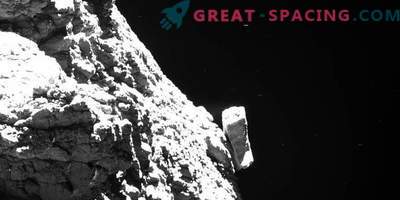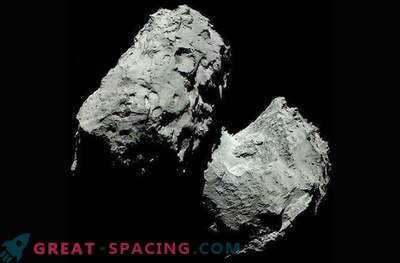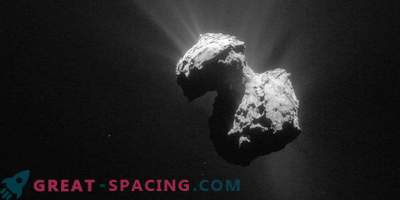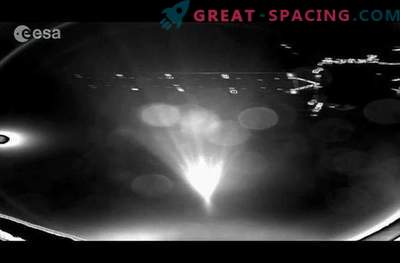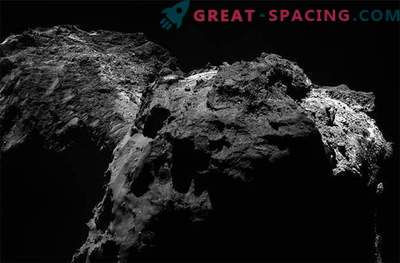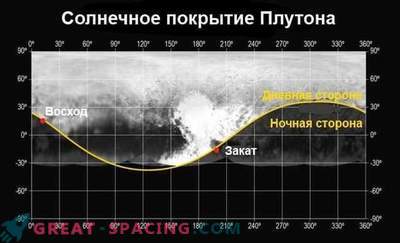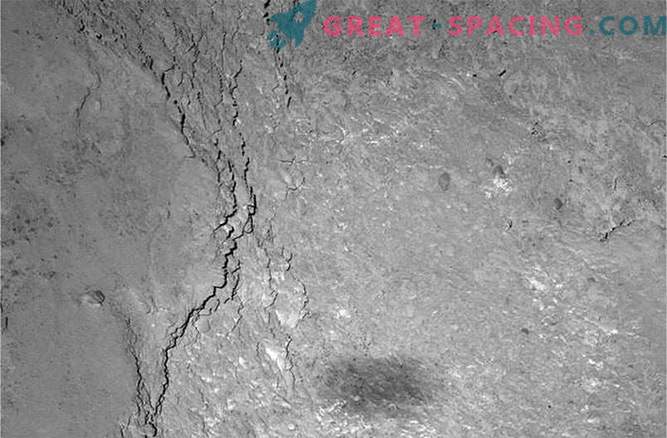
During the close flight of Rosetta over comet 67P / Churyumov-Gerasimenko on February 14, the European spacecraft captured its own shadow, surrounded by a halo, on the bottom of the comet.
The photo was taken when the spacecraft was in line with the sun. This confrontation allowed the scientific camera Osiris to photograph a landscape that was devoid of shadow, providing a unique view for the observations. During this photograph, Rosetta was only 6 km away (3, 7 miles) from the dusty surface of the 67P, capturing tiny formations on a comet with a resolution of up to 11 centimeters per pixel.
As seen in the image above, the shadow of the Rosetta has a blurred border and actually covers an area larger than the spacecraft itself. This is a consequence of the geometric location of the spacecraft relative to the Sun and the comet. Although the Sun is at a distance of more than 215 million miles, it appears as a disk in the sky, forming penumbra, around the main shadow of the Rosetta, thereby adding about 20 “extra” meters. If you were standing on the surface of a comet and looking at the Sun, it would look like a small plane that flew between you and the Sun. Although of course the shadow of the plane would be too small to completely block the sun. Similarly, the silhouette of the Rosetta will not be large enough to completely block the Sun, but sufficient to form a fuzzy shadow.
Since the Sun is right behind the surface of the Rosetta, the rocks and stones of the regolith surrounding Rosetta have practically no shadow of their own. A little further the earth looks a little darker. This is because at this point the angle between the rays of light and the earth is slightly higher.

